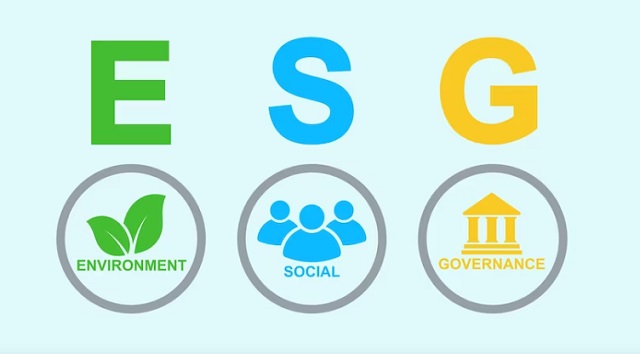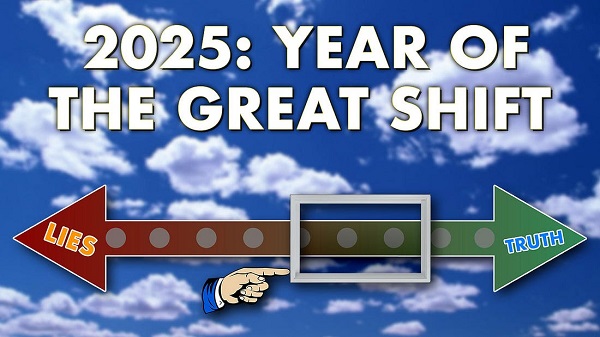Business
ESG doctrine and why it should not be adopted in professional organizations

From the Frontier Centre for Public Policy
By Graham Lane | Ian Madsen
The following introductory comments by Ian Madsen, Senior Policy Analyst, Frontier Centre for Public Policy provide background on Graham Lane whose attached letter to CPA Manitoba strongly criticizes that organization’s embrace of ESG.
Graham Lane is a retired CA and has had a multifaceted professional career spanning almost 50 years in the public and private sectors of seven provinces as a Senior Executive and Consultant.
In the public sector, before concluding his career as the Chairman of the Manitoba Public Utility Board (PUB), he consulted for three provincial governments and was employed by four provinces. In Manitoba, he was the CEO of Credit Union Central, bringing in online banking, a Vice-President of Public Investments of Manitoba, the interim President of Manitoba Public Insurance (MPI), reorganizing the corporation after its massive losses of 1986, a Vice-President of the University of Winnipeg, and the CEO of the Workers Compensation Board, restructuring the insurer and returning it to solvency. His experience with Crown Corporations goes well beyond Manitoba, he was the Comptroller of Saskatchewan’s Crown Investments Corporation, and a consultant reviewing government auto insurance in BC and workers compensation in Nova Scotia. He received the gold medal in Philosophy as an undergraduate, and a Paul Harris Fellowship from Rotary International for excellence in vocational service. Throughout his career, and wherever he worked, consulted or volunteered, he maintained an external objectivity. In recent years the Frontier Centre for Public Policy has been honoured by his presence of the Centre’s Expert Advisory Panel where he has been able to share his extensive public and private sector operations knowledge.
Environmental, Social and Governance Standards, so-called ‘ESG’, and scoring arose from ‘Responsible Investing’ efforts in the 1970’s and 1980’s. Institutional and other investors sought to influence corporations that were seen to be involved in, first, the Vietnam War, and, later on, in conducting business in Apartheid-era South Africa. Since then, the movement has morphed, now evolved into ESG.
ESG is essentially a covert way of exerting control over public companies by means other than buying control in the stock market. It is a ‘so-called’ ‘Social Justice’ movement. It seeks to impose non-market ideology on publicly traded companies, such as ‘Green Energy’ and ‘Diversity, Equity and Inclusion’, or, ‘DEI’. The latter two are the main goals of the effort, and are divisive and destructive. There are three paths that this crusade takes: regulatory, professional, and institutional.
The regulatory one is to compel governments to require that ESG standards be applied. This can occur through regulatory agencies such as the Ontario Securities Commission, the most powerful such body in Canada, or through its sister regulatory bodies in other provinces and territories. Federal and provincial legislation can also be passed and implemented to force some or all ESG-related strictures upon corporations.
This institutional path exerts influence upon the largest investors in Canada: public pension plans, such as the Canada Pension Plan and its CPP Investment Board, Quebec’s Caisse de depot et placements, which does the same for enrolees in Quebec; the federal Public Service Pension Plan, Ontario Teachers; and other provincial and professional pension plan investment bodies. Many, if not all of them, to a greater or lesser extent, have already agreed to and endorse ESG ‘principles’, and now attempt to induce the companies they invest in to subscribe to those edicts.
The professional path is, perhaps, the most pernicious. ESG scoring and rating are akin to accounting and financial reporting and analysis, so the professional bodies responsible for those things, such as provincial and national accounting professionals associations, and national and international associations of financial analysts, such as the Chartered Financial Analysts Institute, have begun to adopt ESG regimens.
However, ESG scoring is not just harmful, it is wildly subjective and susceptible to inaccuracy. ESG evolved from Marxist notions of ‘equity’. It is aligned with collectivist, non-market ideology. Transferring much or most managerial decision-making to those with neither direct expertise nor responsibility for its consequences would be irresponsible, an attack on capitalism itself.
Informed and strong opposition, as in the following letter from 2023 by Graham Lane, to the President of the Manitoba office of the Chartered Professional Accounts, should be heeded if citizens, taxpayers, investors and society at large want to avoid the Canadian economy becoming dominated by and managed by ESG criteria. These diverge radically from traditional proven fiduciary and corporate stewardship standards and principles – in favour of ‘Social Justice’ approved outcomes – which potentially damage or destroy returns for pension plan members, and other indirect and direct investors and the economy as a whole.
Ian Madsen
Senior Policy Analyst
January 4, 2024
Text of letter begins below:
Graham Lane, CPA CA (retired)
xxx (address withheld)
Winnipeg, MB
Geeta Tucker, FCPA, FCMA
President and CEO
CPA Manitoba Office
1675 – One Lombard Place
Winnipeg, MB
R3B OX3
August 26, 2023
Re: ESG courses and accreditation, CPA – “A New Frontier: Sustainability and ESG for CPAs and business professionals” (CPA Canada Career and Professional Development)
Dear Ms. Geeta Tucker:
I recently read, with concern, that the association is offering ESG ‘training’, towards immersing members in validating the Environmental Social Governance – ESG’ -movement’. (“A New Frontier: Sustainability and ESG for CPAs and business professionals.”) I also note, with further concern, a supporting column published on the subject (July/August 2023 Pivot CPA magazine). Our profession and members should ‘think twice’ before ‘jumping in’.
“ESG” stands for environment, social and governance. ESG investors aim to buy the shares of companies that have demonstrated their willingness to improve their performance in these areas. ESG is an acronym that refers of environmental, social, and governance standards that socially conscious investors use to select investments. These criteria consider how well public companies safeguard the environment and the communities where it works, and how they ensure management and corporate governance met high standards. For many people, ESG investing is more than a three-acronym. It’s a practical, real-world process for addressing how a company serves all its stakeholders: workers, communities, customers, shareholders and the environment. ESG offers one strategy for aligning your investment with your values, it’s not the only approach.”
But, the ESG ‘movement’, originally driven by good intentions, has been co-opted by lobbyists, special interest groups, and various NGOs. Recent reviews have revealed ESG’s lackluster performance in creating meaningful environment change, and others have highlighted chronic abuse of flawed methodologies.
ESG has gradually suffused the business and finance world, from its origins in academia and the ‘activist’ movements of various ‘social justice’ interest groups. Now, through the actions of provincial and national CPA bodies, our profession is validating and endorsing the central tenets and precepts of ESG valuation, which is misguided and harmful. ESG is antithetical to the aims of the accounting profession, which is, in part, to give honest, objective and rigorous appraisal of the assets, liabilities, and the profit and cash generating capacity of firms. Risk factors and externalities, including environmental issues, are already covered by GAAP and IFRS standards in financial reporting.
While the proponents of ESG promote it as a means of providing a fuller perspective on important aspects of a firm’s place in society, its community, and the ecosystem, and of its handling of other ‘stakeholders’, who are neither shareholders nor managers of a firm, it does not. In fact, by dubiously evaluating those other aspects of a firm’s status, it badly serves investors by creating possibly devastating conflicts and contradictions. This could imperil a firm and its ability to act autonomously towards providing goods and services to the public, jobs to its employees, and dividends (or capital gains) to its owners (ultimately, the public).
The problem of ESG evaluation and its ‘scoring’ are well-known. There is a lack of consistent standards and objectivity, including those of quantitative metrics that are logical and germane. ESG’s principles are dedicated to diverting and subverting top management; i.e., by substituting other ‘stakeholder’ concerns or aims from those of the firm – which is, principally, to seek short-term and long-term profitability and viability, subject to the constraints of laws, regulations, and physical limitations.
It is important to recall that ESG’s origins were in social activism, with the ‘S’ linked to anti-Apartheid movements on university campus and shareholders’ meetings in the 1980’s and ‘90’s. Then the ‘S’ was ‘Responsible Investing’ – an attempt to isolate and boycott the then-racist regime in South Africa. Then, by bringing the-apartheid regime to the negotiating table, with representatives of the disenfranchised opposition, eventually, it brought to an end to Apartheid itself.
Efforts should continue to draw attention to ‘conflict diamonds’, and minerals being extracted by indentured children and adults in the Democratic Republic of the Congo, along with the continuing oppression of minority groups in regions of China. For these situations, and, other places around the world where there are violent or corrupt regimes, western companies should be careful as to their dealings. Yet, these problems are generally already noted as business risks in proper, professional, corporate reporting, and are also subject to the law and multilateral guidelines and sanctions.
The ‘Environmental’ component of ESG is, perhaps, the primary one that the anti-capitalist movement have been most preoccupied with. It, the movement, accepts entirely, and bases its ideology on, presumptions that are not, despite media rhetoric, accurate. It is not true that global temperatures that are unadjusted or otherwise manipulated by un-objective persons are rising.
Nor is rising temperatures are ‘entirely’ due to higher levels of greenhouse gases in the atmosphere. The level of greenhouse gases in the atmosphere is not the most important factor in the direction, or magnitude, of any warming temperatures that might occur. Nor do any of some vaunted climate models predict (at least with any degree of certainty) what temperatures will be anywhere on the planet, let alone on average. Such efforts have repeatedly provided false projections.
Media and academic pundits have cited heat waves, or other events, as evidence of the tangible effects of purported warming, but these have been anecdotal and ignored other events, with contradictory evidence in other regions. Past predictions of ice cap and glacier melting, desertification, and more and stronger storms and other dire events, have yet come to naught.
Another fraught part of the ‘E’ in ESG scoring is determining ‘Scope 1, 2 and 3’ GHG emissions. The first one, ‘Scope 1’, is not ‘terribly difficult’ to do, but the other two Scopes 2 and 3, need to delve into what suppliers, customers and others do with the goods or services of the subject firm. These would be extremely difficult to determine let alone accurately quantify – and can be very expensive and/or unreliable to even attempt to calculate. At best, such tests might also give a distorted impression of an environmental impact – even ‘damage’ ’ that the firm may, or may not be, imparting.
Finally, the whole ‘Green Transition’ has become a rent-seeking lobby, attempting to capture government and its tax dollars. Their proponents’ supposition of touted ‘benefits’ of solar panels, wind turbines, electric vehicles and batteries – drastically altering or decimating the conventional energy, transportation and agriculture industries – are often erroneous or fraudulent, ignoring the full costs, financial and environmental, of their proposals.
The ’G’, ‘Governance’, part of ESG is also elusive and amorphous. While some of it has to do with the accountability of upper management, that is already covered by the responsibility of the Compensation, Nomination and Succession committees of the Boards of Directors (of all but the smallest companies), and also by regulations and supervision of applicable provincial Securities Commissions. Any malfeasance by managers or other employees, or by governments or other overseas organizations, involving bribery or other crimes, is covered by laws already. Engagement with ‘less-than-perfect’ regimes overseas is unavoidable for some industries, and it is unlikely that any quantitative scoring of such interactions or presence would or could be validly determined.
Another aim of the ESG effort is to compel companies to commit to some form of DEI: ‘Diversity, Equity and Inclusion’.
In practice, DEI cannot merely be about outreach to historically disadvantaged or under-represented communities, but cqn lead to active discrimination against employees or potential hires who are not members of those communities. Commitment to hiring and promotion goals in those communities is legally questionable, but that is almost the least of the problems DEI entails. One of the worst is about the engagement of DEI directors, or outside DEI consultants, to conduct divisive and stressful DEI training, such as sensitivity and ‘microaggression’ awareness and role-playing exercises.
ESG scoring that rewards destructive efforts would or could make companies and organizations alter their operation to appear to ‘earn’ higher scores, while actually damaging their ability to foster a productive work environment, retain qualified staff, generate an adequate rate of return on invested capital, or survive as a going concern.
Another element of the ‘G’ in ESG is to try to inject parties other than shareholders or management into Governance, diluting shareholders’ control – which could or would obscure responsibility and accountability, and could badly delay or derail important capital allocation and other corporate decisions. These groups are suppliers, customers, those affected by the operations or products or services of the company, and communities in which the company operates, and potentially others. A covert attempt to subvert capitalism itself, and the market economy, might happen.
ESG advocates have engendered support by claiming that higher-ESG rated firms, and the shares in those firms, perform better than the ‘typical’ company. However, that is untrue. Studies of Canadian and American ESG and ‘Ethical’ funds (over the past five, ten, and even longer time periods) indicate that they underperform index funds; i.e., funds that invest in the entire market of large firms traded on a stock exchange.
Any funds that claim otherwise are consciously, or unconsciously investing in a style tilted to certain sectors; quite often the low-environmental impact IT sector. Such companies can perform well in a shorter time frame. When examining ESG funds, moreover, it often turns out that they invest in most of the same companies as the index funds – though perhaps with a higher management fee. Also, they could have peculiar criteria for higher ESG ratings, most glaringly rating some oil companies higher than other apparently ‘Green’ ones, such as Tesla. Elimination of low-ESG rated firms from investing can concentrate risk by narrowing diversification, thus violating a central, crucial tenet of investment risk management.
ESG has gained considerable support from corporate interests, including prominent institutional investors such as Blackrock (Chairman, Larry Fink) and public pension funds. While such ‘responsible investing’ may have a glowing aura, it can also have a pernicious effect of trying to coerce corporate management to attain public policy that ‘progressive’ politicians, academics, think tanks and other operatives believe are paramount. Those goals can supersede the shareholder returns that are vital to guarantee beneficiaries of pension funds and other institutional investment portfolios receive their promised benefits. This could violate the fiduciary duty of investment portfolio managers, which is to strive for the best risk-adjusted return that they can. (Several ‘green energy’ companies’ share prices have declined, some drastically in the past year.)
Several state governments in the United States have prohibited ESG-based investment.The Saskatchewan and Alberta provincial governments may also intercede if this ‘movement’ strikes at the vital energy industry.
Giving the considerable reputational power of CPAs, for the Association to ‘educate’ its members in a potentially destructive endeavour, such as ESG evaluation, is a mistake. It would be folly to add yet more risk and damage by validating and promoting ESG.
ESG advocates are now on the defensive, from information available recounted herein. Shouldn’t our profession review its decision to promote ESG?
Yours Sincerely,
Graham Lane, CPA CA (retired)
Former Chairman, Manitoba’s Public Utilities Board
c.c. Pamela Steer, CEO, President and CEO, CPA, Canada
Paul Ferris, Editor, Pivot, CPA Canada
Business
What Do Loyalty Rewards Programs Cost Us?

You’ve certainly been asked (begged!) to join up for at least one loyalty “points” program – like PC Optimum, Aeroplan, or Hilton Honors – over the years. And the odds are that you’re currently signed up for at least one of them. In fact, the average person apparently belongs to at no less than 14 programs. Although, ironically, you’ll need to sign up to an online equivalent of a loyalty program to read the source for that number.
Well all that warm, fuzzy “belonging” comes with some serious down sides. Let’s see how much they might cost us.
To be sure, there’s real money involved here. Canadians redeem at least two billion dollars in program rewards each year, and payouts will often represent between one and ten percent of the original purchase value.
At the same time, it’s estimated that there could be tens of billions of unredeemed dollars due to expirations, shifting program terms, and simple neglect. So getting your goodies isn’t automatic.
The Audit is a reader-supported publication.
To receive new posts and support my work, consider becoming a free or paid subscriber.
Just why do consumer-facing corporations agree to give away so much money in the fist place?
As you probably already know, it’s about your data. Businesses are willing to pay cold, hard cash in exchange for detailed descriptions of your age, sex, ethnicity, wealth, location, employment status, hobbies, preferences, medical conditions, political leanings, and, of course, shopping habits.
Don’t believe it works? So then why, after all these years, are points programs still giving away billions of dollars?
Every time you participate in such a program, the data associated with that activity will be collected and aggregated along with everything else known about you. It’s more than likely that points-based data is being combined with everything connected to your mobile phone account, email addresses, credit cards, provincial health card, and – possibly – your Social Insurance number. The depth and accuracy of your digital profile improves daily.
What happens to all that data? A lot of it is shared with – or sold to – partners or affiliates for marketing purposes. Some of it is accidentally (or intentionally) leaked to organized criminal gangs driving call center-related scams. But it’s all about getting to know you better in ways that maximize someone’s profits.
One truly scary way this data is used involves surveillance pricing (also known as price discrimination) – particularly as it’s described in a recent post by Professor Sylvain Charlebois.
The idea is that retailers will use your digital profile to adjust the prices you pay at the cash register or when you’re shopping online. The more loyal you are as a customer, the more you’ll pay. That’s because regular (“loyal”) customers are already reliable revenue sources. Companies don’t need to spend anything to build a relationship with you. But they’re more than willing to give up a few percentage points to gain new friends.
I’m not talking about the kind of price discrimination that might lead to higher prices for sales in, say, urban locations to account for higher real estate and transportation costs. Those are just normal business decisions.
What Professor Charlebois described is two customers paying different prices for the same items in the same stores. In fact, a recent Consumer Reports experiment in the U.S. involving 437 shoppers in four cities found the practice to be quite common.
But the nasty bit here is that there’s growing evidence that retailers are using surveillance pricing in grocery stores for basic food items. Extrapolating from the Consumer Reports study, such pricing could be adding $1,200 annually to a typical family’s spending on basic groceries.
I’m not sure what the solution is. It’s way too late to “unenroll” from our loyalty accounts. And government intervention would probably just end up making things worse.
But perhaps getting the word out about what’s happening could spark justified mistrust in the big retailers. No retailer enjoys dealing with grumpy customers.
Be grumpy.
The Audit is a reader-supported publication.
To receive new posts and support my work, consider becoming a free or paid subscriber.
Business
Warning Canada: China’s Economic Miracle Was Built on Mass Displacement

If you think the CCP will treat foreigners better than its own people, when it extends its power over you, please think again: Dimon Liu’s warning to Canadian Parliament.
Editor’s Note: The Bureau is publishing the following testimony to Canada’s House of Commons committee on International Human Rights from Dimon Liu, a China-born, Washington, D.C.-based democracy advocate who testified in Parliament on December 8, 2025, about the human cost of China’s economic rise. Submitted to The Bureau as an op-ed, Liu’s testimony argues that the Canadian government should tighten scrutiny of high-risk trade and investment, and ensure Canada’s foreign policy does not inadvertently reward coercion. Liu also warns that the Chinese Communist Party could gain leverage over Canadians and treat them as it has done to its own subjugated population—an implied message to Prime Minister Mark Carney, who has pledged to engage China as a strategic partner without making that position clear to Canadians during his election campaign.
OTTAWA — It is an honor to speak before you at the Canadian Parliament.
My testimony will attempt to explain why China’s economic success is built on the backs of the largest number of displaced persons in human history.
It is estimated that these displaced individuals range between 300 to 400 million — it is equivalent to the total population of the United States being uprooted and forced to relocate. These displaced persons are invisible to the world, their sufferings unnoticed, their plights ignored.
In 1978, when economic reform began, China’s GDP was $150 billion USD.
In 2000, when China joined the WTO, it was approximately $1.2 trillion USD.
China’s current GDP is approximately $18 trillion USD.
In 2000 China’s manufacturing output was smaller than Italy’s.
Today it’s larger than America, Europe, Japan, and South Korea combined.
If you have ever wondered how China managed to grow so fast in such a short time, Charles Li, former CEO of the Hong Kong Stock Exchange, has the answers for you.
He listed 4 reasons: 1) cheapest land, 2) cheapest labor, 3) cheapest capital, and 4) disregard of environmental costs.
“The cheapest land” because the CCP government took the land from the farmers at little to no compensation.
“The cheapest labor,” because these farmers, without land to farm, were forced to find work in urban areas at very low wages.
The communist household registration system (hukou 戶口) ties them perpetually to the rural areas. This means they are not legal residents, and cannot receive social benefits that legal urban residents are entitled. They could be evicted at any time.
One well known incident of eviction occurred in November 2017. Cai Qi, now the second most powerful man in China after Xi Jinping, was a municipal official in Beijing. He evicted tens of thousands into Beijing’s harsh winter, with only days, or just moments of notice. Cai Qi made famous a term, “low-end population” (低端人口), and exposed CCP’s contempt of rural migrants it treats as second class citizens.
These displaced migrant workers have one tradition they hold dear — it is to reunite with their families during the Chinese Lunar New Year holiday, making this seasonal migration of 100 to 150 million people a spectacular event. In China’s economic winter of 2025 with waves of bankruptcies and factory closures, the tide of unemployed migrant workers returning home to where there is also no work, and no land to farm, has become a worrisome event.
Historically in the last 2,000 years, social instability has caused the collapse of many ruling regimes in China.
“The cheapest capital” is acquired through predatory banking practices, and through the stock markets, first to rake in the savings of the Chinese people; and later international investments by listing opaque, and state owned enterprises in leading stock markets around the world.
“A disregard of environmental costs” is a hallmark of China’s industrialization. The land is poisoned, so is the water; and China produces one-third of all global greenhouse gases.
Chinese Communist officials often laud their system as superior. The essayist Qin Hui has written that the Chinese communist government enjoys a human rights abuse advantage. This is true. By abusing its own people so brutally, the CCP regime has created an image of success, which will prove to be a mirage.
If you think the CCP will treat foreigners better than its own people, when it extends its power over you, please think again.
The Bureau is a reader-supported publication.
To receive new posts and support my work, consider becoming a free or paid subscriber.
-

 International2 days ago
International2 days agoOttawa is still dodging the China interference threat
-

 Agriculture6 hours ago
Agriculture6 hours agoEnd Supply Management—For the Sake of Canadian Consumers
-

 Business2 days ago
Business2 days agoThere’s No Bias at CBC News, You Say? Well, OK…
-

 Automotive2 days ago
Automotive2 days agoCanada’s EV gamble is starting to backfire
-

 Digital ID4 hours ago
Digital ID4 hours agoCanadian government launches trial version of digital ID for certain licenses, permits
-

 Alberta3 hours ago
Alberta3 hours agoAlberta Next Panel calls to reform how Canada works
-

 Business57 mins ago
Business57 mins agoThe “Disruptor-in-Chief” places Canada in the crosshairs
-

 International2 days ago
International2 days ago2025: The Year The Narrative Changed








